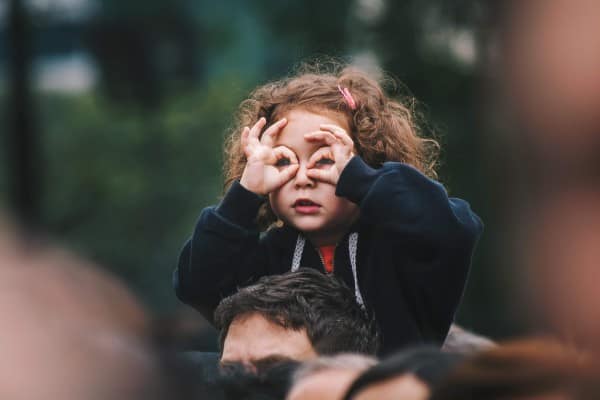Self-observation is incredibly important for our personal development. Self-observation tools for growth enhance everything from learning and problem-solving to intuitive insight.
To make changes, we must identify the gap between where we are now and where we want to be. Assessing this gap requires the ability to observe and honestly assess where we are and what we need. This process of internal inquiry is based on Aristotle’s philosophy.
Knowing yourself is the beginning of all wisdom. – Aristotle
This quote emphasizes the fundamental role of self-awareness in achieving true wisdom. This concept is connected to effective self-observation practices and self-observation tools for growth.
The Tools for Enhancing Self-Observation Skills
Self-observation brings man to the realization of the necessity of self-change. And in observing himself, a man notices it brings about certain changes in his inner processes. ― George Ivanovich Gurdjieff
Mr. Gurdjieff (1) brings up the age-old question. What came first, the chicken or the egg? It is the same question here with observation and awareness. Teachers like Gurdjieff tell us we must be both awake and aware before being able to observe the real world.
Others, like Carlos Castaneda (2), say that we must learn to use effective self-observation practices and tools to become aware. Either way, the goal is to become more self-aware. When we are self-aware and present, the real you, the observer of our consciousness, can come forward.
My benefactor said that when a man embarks on the paths of sorcery, he becomes aware, in a gradual manner, that ordinary life has been forever left behind; that knowledge is indeed a frightening affair; that the means of the ordinary world are no longer a buffer for him; and he must adopt a new way of life if he is going to survive. The first thing he ought to do, at that point, is to want to become a warrior. — Carlos Castaneda
The ego is the unobserved mind. It is the voice in the head which pretends to be you, the unobserved emotions that are the body’s reaction to what the voice in the head is saying. — Eckhart Tolle
Effective Self-Observation Practices and Tools
It is prudent to increase awareness and self-observation simultaneously. Anyone can learn to be more observant and aware. The more aware you are, the more data you will perceive when you observe. Tools for enhancing self-observation skills have several tangible benefits.
1. Greater Awareness. Conscious of your thoughts, emotions, and actions as they occur.
2. Understanding Patterns. Reflect and analyze your experiences and behaviors.
3. Non-judgmental. Observe without criticism or bias, simply noting what you notice.
4. Intuitive Insight. Gain new understanding and perspectives about yourself.
5. Make Positive Changes. Use the insights gained to grow and improve.
It is important to remember that everything we experience happens within the mind. The senses gather data, and we filter it through our worldview to get an individually crafted representation of reality. So, we don’t perceive the world as it is; we see it as we expect it to be.
Our worldview is a complex combination of beliefs, memory, expectations, and sensory input. If these contain bias and prejudice, they will taint our thinking. Everyone has a unique way of interpreting the world, which is why eyewitness accounts are not accurate. Several people can see the same things, but perceive them differently.
The process of cleaning your worldview involves removing unhealthy thinking patterns and beliefs. Here, we use the tools for positive change. Sometimes, it’s not pleasant because prejudice and bias are deep-rooted habitual patterns.
Interactive Self-Observation Tools for Growth
When we interact with others, we can assess verbal and nonverbal cues. It is essential to learn to control the outcome of a particular encounter. First, determine the goal of your meeting or interaction. Is it to understand or communicate something? Is the setting business or personal?
Some basic skills will help you get the most out of any interaction. These skills are a skill set trained interviewers use, but anyone can learn and benefit from them. They involve four key areas when interacting with another person.
Practice Active or Reflective Listening to understand what is being said instead of planning a response. You must focus on the person and stop your internal dialogue. This is one of the most effective self-observation practices and tools for growth. It has an immediate positive effect on relationships. Here, we are learning to focus outward, but we can use this same skill to focus inward.
Build Trust. Follow through with promises, big and small. Supporting others will increase your social acumen. To build trust, you must understand the needs of others. Exploring the needs of other people helps us better understand our own needs.
Knowing your strengths and weaknesses can help you become more authentic and reliable. Authenticity and reliability are key components of trust. Self-observation enables you to manage your emotions and reactions in stressful situations. This self-awareness helps us build stronger, more trusting relationships. The better you know yourself, the better you can connect with others.
Asking for Feedback is straightforward. Ask friends, family, or colleagues for honest feedback about your behavior and actions. Feedback provides insights from others that you might not notice yourself. This external perspective can highlight blind spots and areas for improvement. It helps you see your actions and behaviors more objectively. It can validate your observations and offer new viewpoints you hadn’t considered.
Regular feedback can reveal patterns in your behavior over time. This can help you understand recurring issues and work on them more effectively. Knowing you will receive feedback motivates you to watch your actions and strive for improvement. Feedback is one of the most powerful self-observation tools for growth. It encourages more profound reflection on your actions and decisions. It prompts you to think critically about how you can apply the feedback to improve.
Constructive feedback can help you develop specific skills. Acting on feedback can make your self-observation more focused and actionable. Feedback serves as a mirror, helping you understand how your behavior affects others. Considering the feelings of others can increase your empathy and compassion for them.
Increase Adaptability. Adaptability helps you to challenge your thinking and beliefs. Comparative religious study increases adaptability. It enables you to understand why you believe what you believe.
Role-playing involves acting out different scenarios to understand various perspectives and your reactions. Role-playing prepares you for real-life situations, like talking in front of a crowd. Professional athletes and speakers use this technique to build skills and confidence. Tools for enhancing self-observation skills help you develop muscle and intellectual awareness.
Individual Self-Observation Tools for Growth
Environmental Awareness. Pay attention to your surroundings. Assess how different environments affect you. When possible, adjust your surroundings to improve your well-being. Enhancing observation skills starts with opening your awareness to your immediate surroundings. Practice watching and listening. We don’t do this because we are too used to being entertained. Instead, learn to observe people.
Don’t encourage tunnel vision, which means refraining from your smartphone. If the first thing you do when you sit down in a crowded place is to pull out your phone, stop. Instead, use the first minute to observe yourself and your surroundings.
Conclusion
Self-observation tools for growth are practical activities that are easy to work into your routine. These tools have several benefits: they expand awareness, make one more observant, and help one be present.
References
(1) George Ivanovich Gurdjieff.
(2) Carlos Castaneda.

